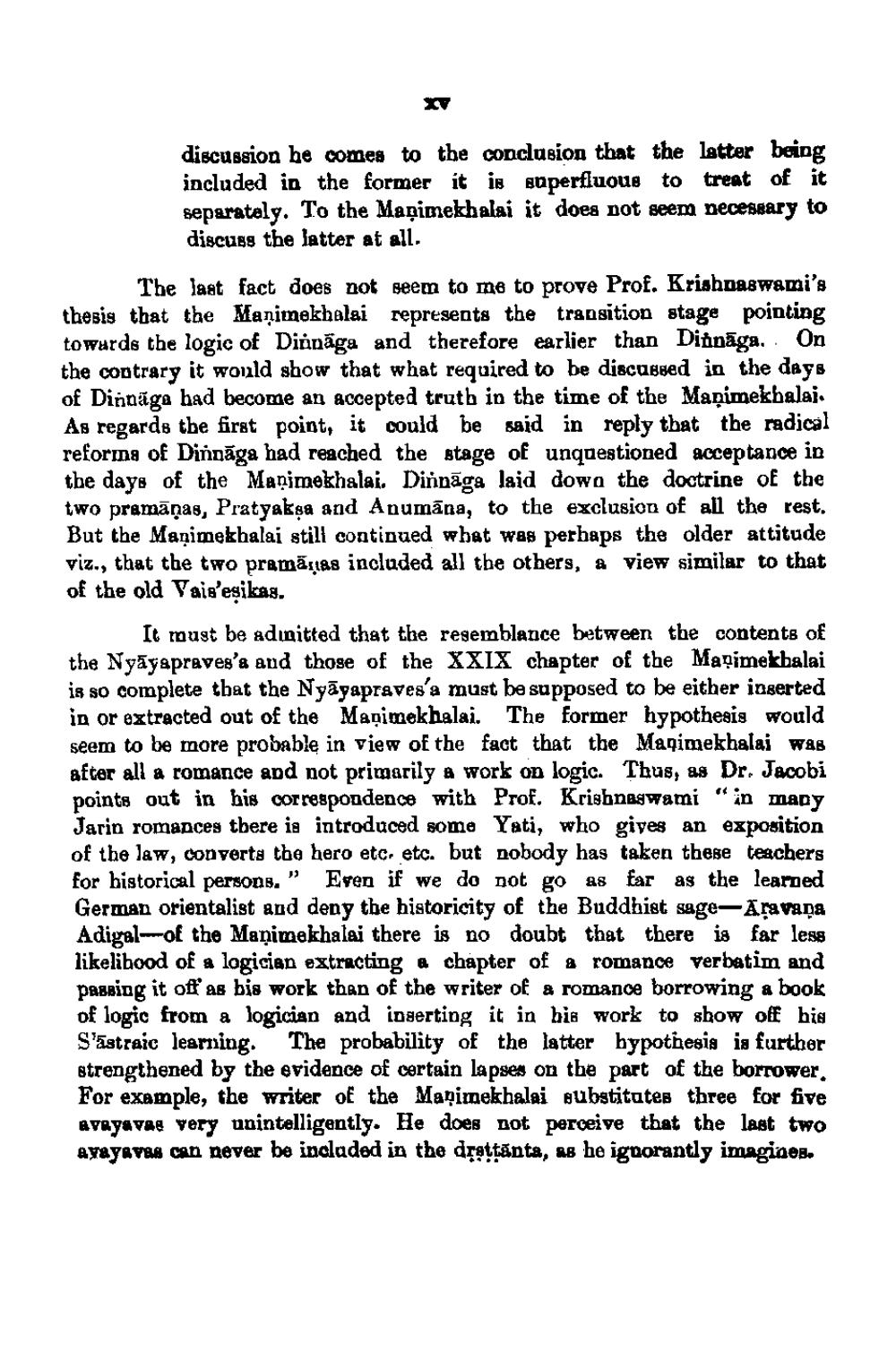________________
discussion he comes to the conclusion that the latter being included in the former it is superfluous to treat of it separately. To the Manimekhalai it does not seem necessary to discuss the latter at all.
The last fact does not seem to me to prove Prof. Krishnaswami's thesis that the Manimekhalai represents the transition stage pointing towards the logic of Diināga and therefore earlier than Dirnāga. On the contrary it would show that what required to be discussed in the days of Dinnāga had become an accepted truth in the time of the Manimekhalaj. As regards the first point, it could be said in reply that the radical reforma of Dinnāga had reached the stage of unquestioned acceptance in the days of the Manimekhalai. Dinnāga laid down the doctrine of the two pramāņas, Pratyakna and Anumāna, to the exclusion of all the rest. But the Manimekhalai still continued what was perhaps the older attitude viz., that the two pramintas included all the others, & view similar to that of the old Vais'esikas.
It must be admitted that the resemblance between the contents of the Nyāyapraves'a and those of the XXIX chapter of the Marimekbalai is so complete that the Nyāyapraves'a must be supposed to be either inserted in or extracted out of the Maşimekhalai. The former hypothesis would seem to be more probable in view of the fact that the Maqimekbalai was after all a romance and not primarily a work on logic. Thus, as Dr. Jacobi points out in his correspondence with Prof. Krishnaswami "in many Jarin romances there is introduced some Yati, who gives an exposition of the law, converts the hero etc. etc. but nobody has taken these teachers for historical persons. " Eren if we do not go as far as the learned German orientalist and deny the historicity of the Buddhist sage-Aravana Adiyal of the Manimekhalai there is no doubt that there is far less likelihood of a logician extracting a chapter of a romance verbatim and pabaing it off as bis work than of the writer of a romance borrowing a book of logic from a logician and inserting it in his work to show off his S'astraic learning. The probability of the latter bypothesis is further strengthened by the evidence of certain lapses on the part of the borrower. For example, the writer of the Manimekhalai substitutes three for five avayavae very unintelligently. He does not perceive that the last two AYAYAves can never be incladed in the drattānta, as he iguorantly imagines.




